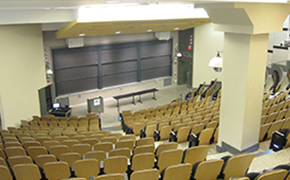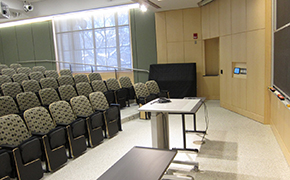Instructor Insights pages are part of the OCW Educator initiative, which seeks to enhance the value of OCW for educators.
Below, Professor Scott Sheffield describes various aspects of how he teaches 18.600 Probability and Random Variables.
OCW: How would you describe what probability is to someone unfamiliar with the topic? And why does it matter?
Prof. Sheffield: Every aspect of life involves uncertainty. Probability is a systematic approach to quantifying that uncertainty. It enables us to think more clearly and make better informed decisions about pretty much everything.
OCW: You’ve been teaching 18.600 (formerly 18.440) since 2011. How has it changed over the years?
Prof. Sheffield: The class is typically much larger now than it was ten years ago. Thanks in part to the rise of topics like data science and machine learning, pretty much everybody recognizes the importance of probability. We now have TA recitations, an online forum, a nicer room, and a huge collection of sample problems.
Everybody needs to know probability. It’s a beautifully engaging subject, an exciting place to combine mathematics and storytelling with pretty much any real-world discipline.
— Professor Scott Sheffield
OCW: The previous version of your course on OCW (18.440 from 2014) has had over 10,000 user visits to date. It usually has between 100 and 150 visits per day. What makes this subject so popular (despite not having videos!)?
Prof. Sheffield: Everybody needs to know probability. It’s a beautifully engaging subject, an exciting place to combine mathematics and storytelling with pretty much any real-world discipline.
› Read More/Read Less
Curriculum Information
Prerequisites
Requirements Satisfied
- GIR

- REST

- 18.600 can be applied toward a Bachelor of Science in Mathematics, but is not required.
Offered
Every semester
Assessment
Grade Breakdown
The students' grades were based on the following activities:
 20% Ten problem sets 20% Ten problem sets 40% Two midterm exams 40% Two midterm exams 40% Final exam 40% Final exam |
Student Information

Breakdown by Year
A roughly even mix of levels, with fewer first-year students in the fall semester because many entering students take 18.02 Multivariable Calculus (the prerequisite for 18.600) in their first semester.
Breakdown by Major
Students from a wide range of majors take 18.600.
Typical Student Background
Many but not all of the students have learned some probability and combinatorics for math competitions or AP statistics.
During an average week, students were expected to spend 12 hours on the course, roughly divided as follows:
Lecture
Met 3 times per week for 1 hour per session; 39 sessions total; mandatory attendance.
Recitation
Recitations, led by teaching assistants, met 1 time per week for 1 hour per session; 13 sessions total; mandatory attendance.
Out of Class
Outside of class time, students worked to complete problem sets and study for the midterms and final exam.
Semester Breakdown
| WEEK | M | T | W | Th | F |
|---|---|---|---|---|---|
| 1 |  |
 |
 |
 |
 |
| 2 |  |
 |
 |
 |
 |
| 3 |  |
 |
 |
 |
 |
| 4 |  |
 |
 |
 |
 |
| 5 |  |
 |
 |
 |
 |
| 6 |  |
 |
 |
 |
 |
| 7 |  |
 |
 |
 |
 |
| 8 |  |
 |
 |
 |
 |
| 9 |  |
 |
 |
 |
 |
| 10 |  |
 |
 |
 |
 |
| 11 |  |
 |
 |
 |
 |
| 12 |  |
 |
 |
 |
 |
| 13 |  |
 |
 |
 |
 |
| 14 |  |
 |
 |
 |
 |
| 15 |  |
 |
 |
 |
 |
| 16 |  |
 |
 |
 |
 |
 No classes throughout MIT
No classes throughout MIT Lecture
Lecture Problem set due
Problem set due No class session scheduled
No class session scheduled Recitation
Recitation Exam
ExamCourse Team Roles
Professor Sheffield
Delivering lectures; conducting office hours two hours per week
Teaching Assistants (3)
Leading recitations; conducting office hours two hours per week


 Room 1 of 2
Room 1 of 2 
